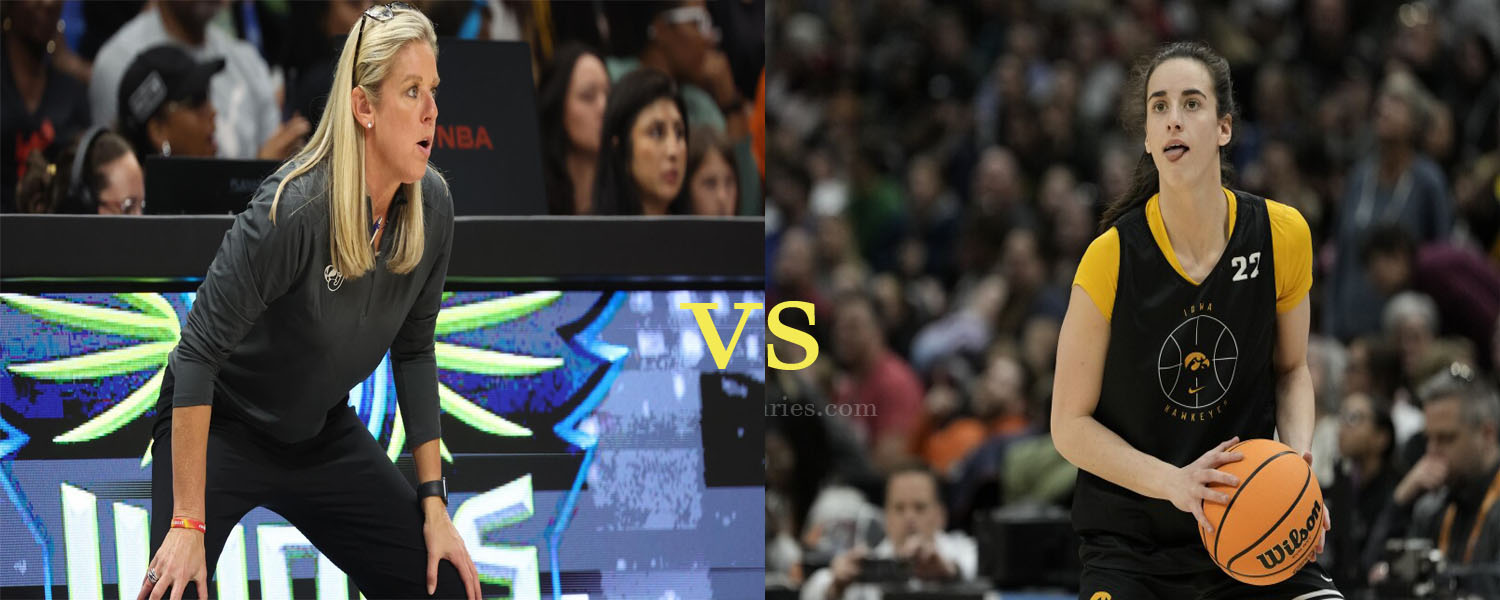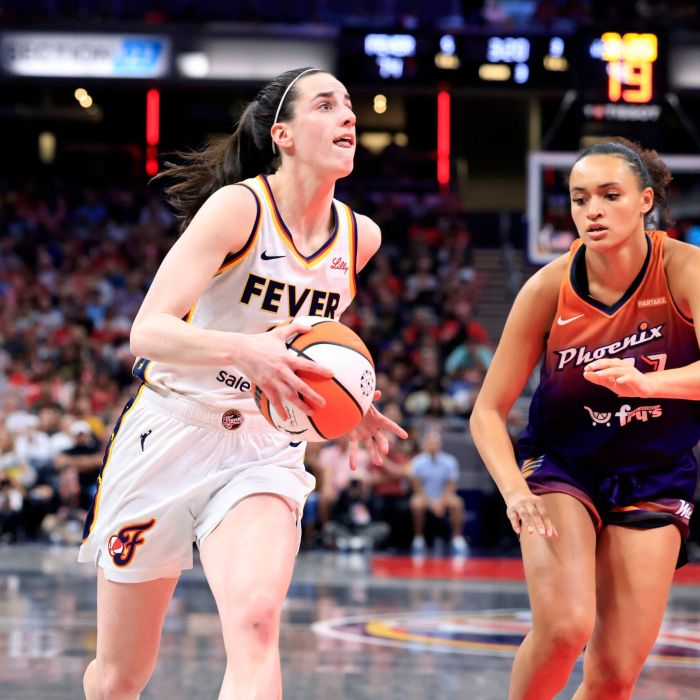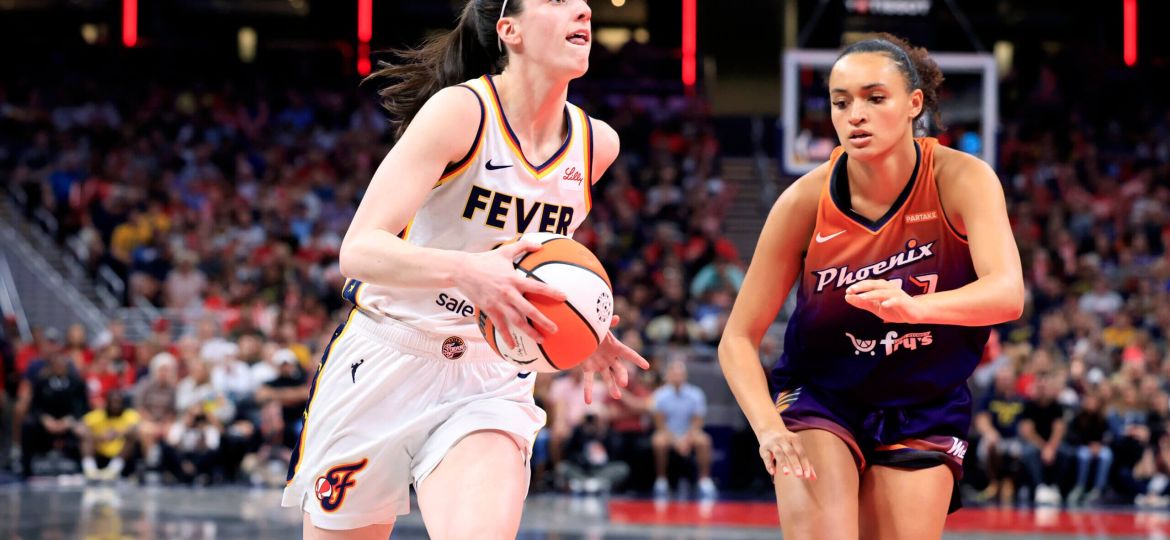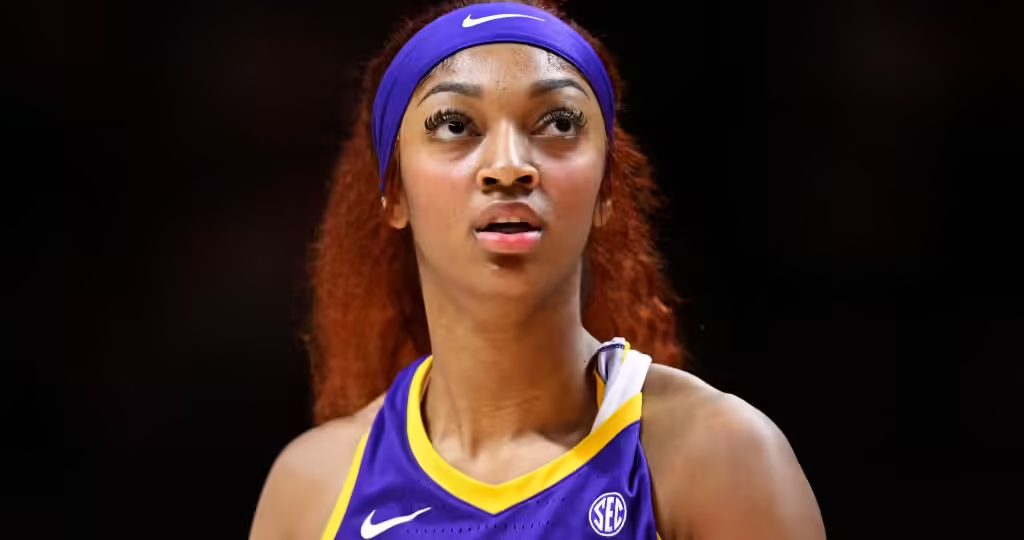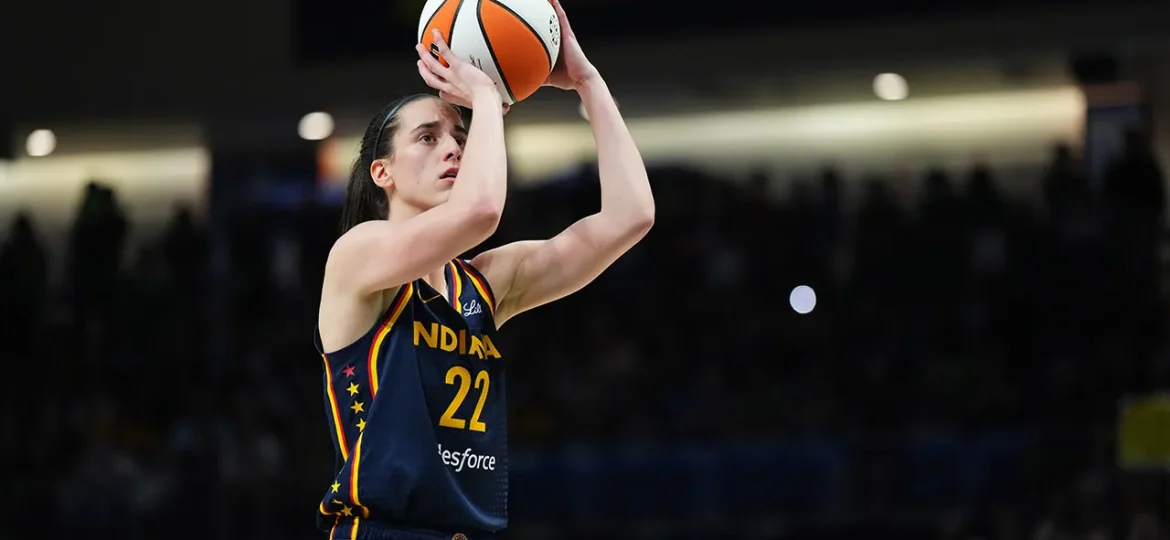When Caitlin Clark joined the Indiana Fever, everyone expected big changes. As the top draft pick and the highest scorer in NCAA history, she was seen as a beacon of hope for the team. But things haven’t gone as planned. Instead of shining on the court, Clark finds herself on the sidelines during crucial moments, often seeing her requests to be on the offensive turned down. The person behind these decisions? Head coach Christie Sides. Despite her impressive coaching background, fans and analysts are puzzled by her choices. Is Sides making the right calls, or are her decisions holding back the team’s star player and their potential success?
Caitlin Clark: A Powerhouse with Potential
Caitlin Clark has emerged as a powerhouse in women’s basketball, marked not only by her exceptional skills on the court but also by her strong character and leadership qualities. Her journey from dominating the NCAA to becoming the No. 1 overall draft pick in 2024 by the Indiana Fever exemplifies her meteoric rise in the sport.
Caitlin Clark’s basketball journey began with a series of record-breaking performances in the NCAA. Renowned for her scoring prowess, she shattered records and etched her name in history as the all-time leading scorer in NCAA women’s basketball. One of her most memorable feats occurred in 2023 when she scored an unprecedented 55 points against Iowa State, setting a new standard for scoring excellence in her home state of Iowa. This game not only highlighted her ability to score at will but also showcased her composure under pressure, guiding her team to a thrilling victory.
Clark’s dominance in college basketball naturally led to high expectations as she entered the WNBA draft in 2024. The Indiana Fever, recognizing her potential to transform their fortunes, eagerly selected her as the No. 1 overall pick. Her arrival was anticipated not only for her scoring ability but also for her playmaking skills and leadership qualities that promised to elevate the team’s performance to new heights.
Clark’s transition to professional basketball with the Indiana Fever was met with anticipation from fans and analysts alike. Her ability to score from anywhere on the court and orchestrate plays made her an immediate asset to the team. Despite being a rookie, her performances hinted at her immense potential to become a cornerstone player for the Fever, capable of leading them through challenging moments and towards future success.
The Clash of Styles: Christie Sides vs. Caitlin Clark
The heart of the controversy with the Indiana Fever lies in the clash between Christie Sides’ defensive-oriented coaching style and Caitlin Clark’s offensive prowess. Sides’ coaching philosophy, built on discipline, defense, and meticulous preparation, has earned her a solid reputation in the basketball world. She is known for turning teams into defensive powerhouses, as seen during her time with the Atlanta Dream. However, her tenure with the Fever has been nothing short of a rollercoaster, marked by both praise and criticism. While her defensive game plan garners respect, some of her decisions have ruffled feathers among fans and analysts alike.
In a recent game play with the Phoenix, Caitlin Clark, the dynamic rookie, calls for a screen, her eyes set on breaking through the defense. She’s in her element, reading the court and preparing to make a decisive play. But Christie Sides, sticking rigidly to her structured game plan, directs Clark to pass instead. Clark, visibly frustrated, looks at Sides with her hand in the air, her expression clearly saying, “What are you thinking?” This moment encapsulates the tension between Sides’ controlled, defense-first approach and Clark’s natural, free-flowing offensive instincts.
Clark’s ability to light up the court with her scoring prowess contrasts sharply with Sides’ focus on structured defensive schemes. This fundamental difference in style has created a palpable power struggle on the court. Sides demands discipline and adherence to her defensive strategies, often at the expense of offensive fluidity. Clark, on the other hand, thrives in a more open, high-paced game where she can utilize her scoring talents and quick decision-making.
This clash is not just about differing philosophies; it’s a battle for control and identity within the team. Sides’ insistence on sticking to her game plan can sometimes stifle Clark’s creative playmaking abilities, leading to visible frustration. For instance, during a crucial game against the Phoenix Mercury, Clark was on fire, completely dismantling the opposing defense. Yet, even then, Sides refused to give her the freedom to fully exploit her hot streak, insisting instead on rigidly structured plays. Fans watching the game could feel the tension, with many expressing their frustration over social media.
The dynamic between coach and player highlights a broader issue within the Fever’s strategy. There’s a clear need for balance—leveraging Clark’s offensive talents while maintaining the defensive integrity that Sides values. However, finding this balance has proven challenging. The result is a team often caught between two worlds: one of rigid defensive schemes and another of potential offensive explosiveness that remains untapped.
The Power Struggle on the Court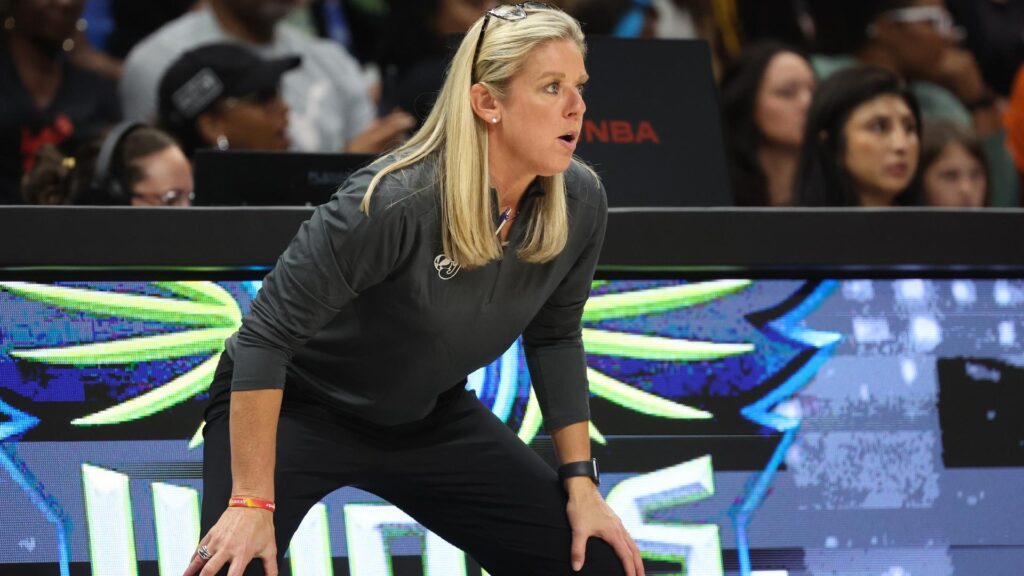
Caitlin Clark was on fire, completely dismantling Phoenix’s defense with her dazzling moves and pinpoint accuracy. It was a performance that had fans on the edge of their seats, eagerly anticipating each play. Clark was in her element, showcasing why she’s one of the most exciting rookies in the league. However, despite her spectacular performance, Christie Sides refused to give Clark even the slightest bit of control. Instead of letting her ride the wave of her hot streak, Sides insisted on sticking rigidly to her game plan. This decision didn’t just frustrate Clark—it frustrated everyone watching the game.
The tension reached a boiling point during a timeout. Clark, clearly exasperated, had a visible altercation with Sides. The coach grabbed Clark’s arm, trying to impose her authority, but this only made things worse. Fans were outraged, with many feeling that Sides was crossing a line. This wasn’t just about one play or one game; it was about a coach trying to impose control on a star player who needed the freedom to express her talent. The clash was clear: a coach set in her ways and a player desperate to unleash her full potential.
Sides’ coaching methods have come under intense scrutiny. Her insistence on controlling every aspect of the game has led many to question her competence. Fans and analysts alike have labeled her style as “basketball terrorism,” a term reflecting the belief that her approach stifles the team’s offensive capabilities. The Fever’s offense often appears disjointed, with players caught in a tug-of-war between following Clark’s lead or adhering to Sides’ instructions. This dysfunction on the court is not just a minor hiccup; it’s a significant point of contention that has serious implications for the team’s future.
The Fever’s offensive struggles are evident. There are moments in games where players seem unsure of their roles, leading to confusion and missed opportunities. This uncertainty stems from a lack of clear direction. Should they trust Clark’s instincts and play a fast-paced, dynamic game, or should they follow Sides’ methodical, defense-first approach? The inability to reconcile these two styles has led to a disjointed offense that struggles to find its rhythm.
This dysfunction raises a critical question: Is Christie Sides the right coach for a team with a rising star like Caitlin Clark? A player of Clark’s caliber needs the freedom to make split-second decisions and take control when she’s in the zone. Restricting her with a rigid system not only hampers her performance but also limits the team’s potential. The Fever need a coach who can blend structure with flexibility, allowing star players to shine while maintaining overall team discipline.
Fans’ Frustration Boils Over
Fans are vocal about their frustrations. They’ve noticed how often teammates look at Clark, only to pass elsewhere, a clear sign of hesitation and confusion on the court. This consistent pattern has led to widespread criticism of Christie Sides’ coaching schemes. Fans argue that Sides’ rigid system is stifling the team’s offensive flow and, more importantly, holding back Clark’s potential to dominate games. The Fever’s offensive struggles are often attributed to Sides’ insistence on maintaining a disciplined, defense-first approach, which they believe is outdated and counterproductive in maximizing the team’s strengths.
The fervor among fans has reached a boiling point, with many calling for a change in coaching philosophy. They believe that good coaches know when to step back and let their players shine, allowing their natural talents to take over, especially in critical moments. The tension isn’t just limited to the fans; it’s also directed towards the Fever’s General Manager. There’s a growing sentiment that the GM is complicit in this dynamic by not addressing the evident discord between Sides’ coaching style and the team’s needs. The GM’s reluctance to intervene or make necessary changes has only fueled the frustration, with fans demanding accountability and immediate action to rectify the situation.
The Statistical Disparity: A Waste of Talent
Clark leads all WNBA rookies in shot attempts, yet she ranks 22nd overall in the league. This statistic alone is telling. During her illustrious college career at Iowa, Clark was a dominant offensive force, averaging 20.1 shots per game and peaking at 22.7 in her senior season. Her ability to consistently create scoring opportunities and make high-pressure shots made her a standout player, earning her numerous accolades and a reputation as one of the most formidable guards in the game.
In stark contrast, under Sides’ current system, Clark is not getting the same level of opportunities. When compared to elite guards in the WNBA, the disparity becomes even more glaring. Dallas guard Arike Ogunbowale, for instance, leads the league with 21.8 shots per game. Other top guards like Seattle’s Jewell Loyd, Las Vegas’ Kelsey Plum, and New York’s Sabrina Ionescu all average significantly more shots than Clark. This highlights a troubling trend: Clark’s potential is being underutilized.
The limited shot attempts suggest that Clark’s talents are not being fully harnessed, raising concerns about whether Sides’ coaching approach is conducive to developing young stars. Fans and analysts alike argue that Clark’s offensive prowess is being wasted, as the current system does not allow her to play to her strengths. This is not just a loss for Clark, but for the team as a whole, which could benefit immensely from her scoring ability if given the right opportunities.
The Road Ahead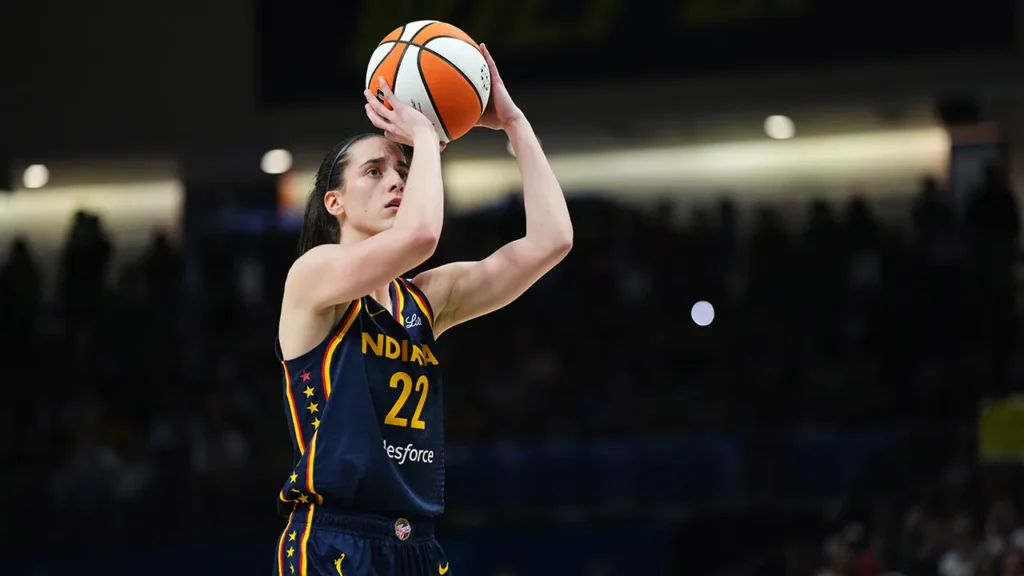
For the Indiana Fever to truly capitalize on Caitlin Clark’s exceptional talent, Christie Sides needs to adapt her coaching approach. This adaptation isn’t about abandoning her proven defensive principles; rather, it’s about integrating them with strategies that allow Clark to shine.
Here’s how the Fever can achieve this delicate balance:
Embrace Offensive Freedom:
Sides must recognize the value of giving Clark more freedom to make plays on the court. Clark’s instincts and offensive prowess are among the best in the league, and her ability to read the game and react swiftly is unparalleled. Allowing her the liberty to call plays, take more shots, and drive the tempo can unleash her full potential. Sides should provide a framework that supports offensive creativity rather than stifles it. This means trusting Clark to make decisions in real-time, which can lead to more dynamic and unpredictable offensive plays.
Develop Hybrid Strategies
Integrating Sides’ defensive strategies with offensive schemes that cater to Clark’s strengths is crucial. This could involve designing hybrid plays that start with a strong defensive setup but transition smoothly into offensive opportunities. For instance, leveraging Clark’s speed and agility in fast-break situations can turn defensive stops into scoring chances. By blending defensive discipline with offensive fluidity, the Fever can create a more cohesive and versatile game plan.
Encourage Communication and Collaboration:
Effective communication between Sides and Clark is essential. Regular discussions about game strategies, player roles, and on-court dynamics can foster a better understanding and mutual respect. Sides should actively seek Clark’s input, valuing her perspective as a player who directly experiences the game’s flow. This collaborative approach can lead to the development of strategies that align with both the coach’s vision and the player’s instincts.
Optimize Player Roles
Sides should consider optimizing player roles to complement Clark’s style. This involves positioning teammates in ways that maximize their strengths while supporting Clark’s offensive initiatives. For example, having strong screeners and reliable shooters around Clark can create more scoring opportunities and relieve some of the defensive pressure she faces. By building a team dynamic that amplifies Clark’s abilities, the Fever can become a more formidable force on both ends of the court.
Flexibility and Adaptation
Flexibility is key to finding the right balance. Sides must be willing to adapt her game plans based on the flow of the game and the performance of her players. This means being open to adjusting defensive schemes to support offensive surges and vice versa. By remaining flexible and responsive, Sides can ensure that her strategies are effective and relevant in different game situations.
Foster a Positive Team Culture:
Creating a positive and supportive team culture is vital for achieving success. Sides should encourage a culture where players feel valued and empowered to express their talents. Recognizing and celebrating individual contributions can boost team morale and cohesion. When players, especially stars like Clark, feel supported and trusted, they are more likely to perform at their highest level.
In conclusion, the question remains: Is Christie Sides holding back Caitlin Clark and the Fever? This power struggle is not just about tactical decisions; it reflects deeper issues of trust and adaptation. The answer lies in the ability of the coach and the player to find common ground.
With Clark’s exceptional talent and Sides’ vast experience, the Fever have the ingredients for success. Sides must learn to trust Clark’s instincts and give her the freedom to make plays, especially when she’s performing at her peak. Conversely, Clark needs to understand and respect the defensive principles that Sides brings to the table. By integrating Sides’ defensive discipline with Clark’s offensive brilliance, the Fever can become a more dynamic and effective team.
Open communication and mutual understanding are crucial for this partnership to thrive. It’s time to let the talent work and for the coach to trust her star player. The future of the Fever depends on it.
We want to hear from you! Do you think Christie Sides is holding back Caitlin Clark and the Fever? Share your thoughts and join the conversation in the comments below!


